
|
| Marbles are limestones or dolostones that have been metamorphosed. Since metamorphism recrystallizes the individual calcite or dolomite crystals in the parent rock, slightly metamophosed limestones have textures that look slightly blurred compared to a fresh limestone. Such marbles are commonly used as floor tiles and facing stone in public buildings. With higher degrees of metamorphism, the large intergrown calcite and dolomite crystals are more obvious. Such samples are typically passed around in labs. |
|
Click here for a super-close-up. |
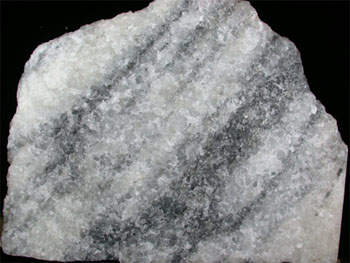 |
|
Such a sample could also be gypsum or halite, for example. A quick hardness test plus a drop of acid will quickly help you figure out that this is made of calcite and is hence a marble. |
 |
|
Sylvite, which is KCl, looks very similar to this. A quick lick would tell you whether this is sylvite. (Sylvite tastes like slightly bitter salt. It is the main ingredient in low-sodium salt substitutes.) |
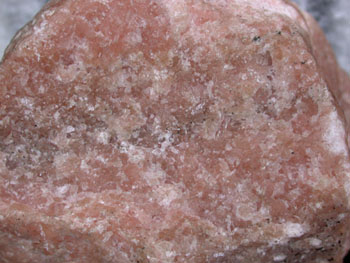 |
|
In close-up view, you can see that the boundaries between beds look slightly blurred. This marble saw a fair amount of stretching, as evidenced by the lens-shaped pods. These are parts of the original dolostone that for some reason were not as easily stretched and thinned. |
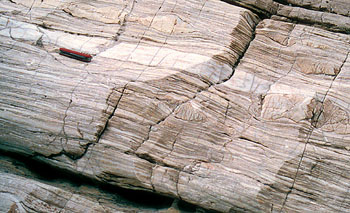 |
|
Photo by Norris W. Jones |
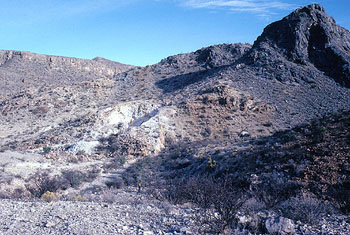 |
|
Photo by Norris W. Jones |
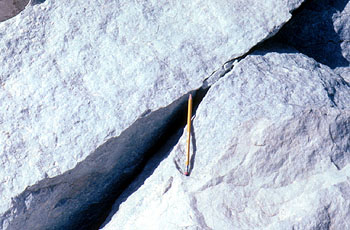 |
Return to GeoImage Home Page
![]()
|
|
|